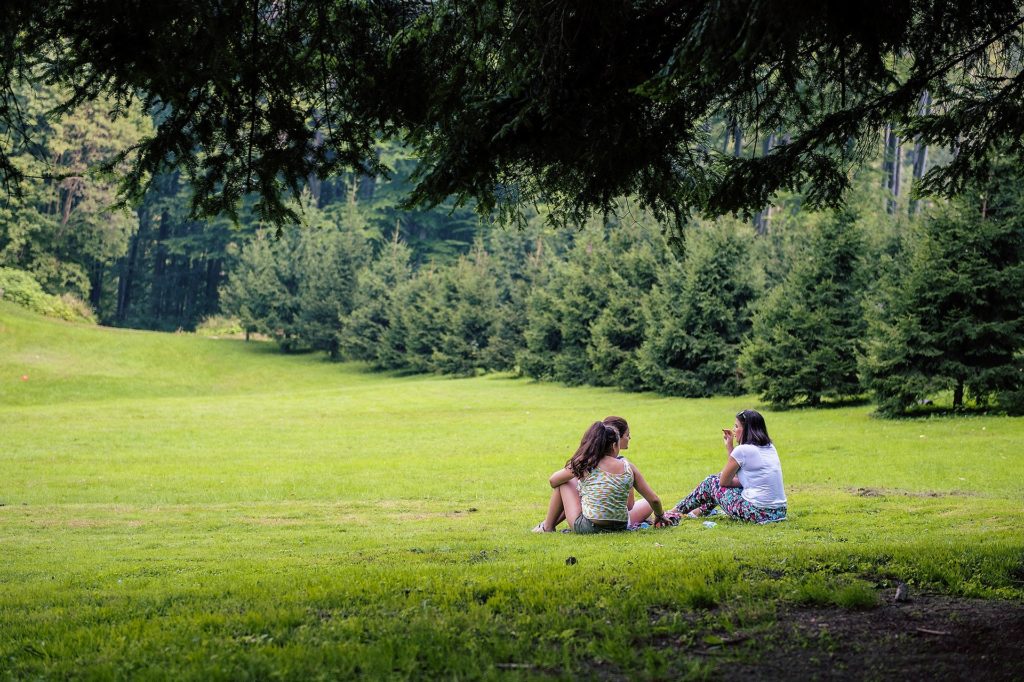A new study, published in the Proceedings of the National Academy of Sciences (PNAS), investigates the effects that proximity to green space in childhood has on mental health outcomes in adulthood. Results of the eighteen-year longitudinal study, which includes over 943,000 individuals, suggest proximity to green space among children younger than ten years old has significant outcomes on wellbeing later in life. In the study, disorders related to mood, depression, stress, and somatization were most affected by green space.
“In some societies, urban residents have almost 50% higher risk of developing psychiatric disorders such as anxiety and mood disorders compared with their rural counterparts, and schizophrenia risk is 200% higher for children growing up in the most urban environments,” the researchers, led by Kristin Engemann of Aarhus University in Denmark, write.

Research finds that individuals in urban areas experience higher levels of mental health concerns as compared to their rural counterparts. The mechanics of this “urban-rural gradient” are not well understood. However, scientists’ hypotheses include higher exposure to pollution and infections, reduced exposure to green space, and selective migration.
Contact with nature has been linked to community cohesion, reduced crime, and overall health. Some research examining this link suggests that access to green spaces may work to improve mental health.
“Exposure to green space has been suggested to lower depression and schizophrenia risk, improve children’s cognitive development, and reduce neural activity linked to psychiatric disorders,” Engemann and colleagues explain.
The current study sought to examine the effect of proximity to green space in childhood has on the development of psychiatric disorders. Data on mental health outcomes, socioeconomic status, and place of residence between 1985-2003 were obtained from a Danish population-based registry. These longitudinal data were used in conjunction with satellite images detecting the proximity of residence to green space. Four different proximity squares were determined: 210 x 210m, 330 x 330m, 570 x 570m, and 930 x 930m.
“We combined these two datasets for two purposes: (i) to examine the specific contribution of green space presence during childhood to the risk of diverse, adolescent into adult psychiatric disorders, over and above the contributions of correlated risk factors including urbanization, socioeconomic factors, parental history of mental illness, and parental age; and (ii) to explore how green space is affecting mental health by estimating these associations at different ages and by determining the shape of the relationship green space has with each of the psychiatric disorders.”
After analyzing the longitudinal data for 943,027 individuals, and adjusting for urbanization, parent’ socioeconomic status, family history, parental age, and local socioeconomic factors, the researchers found high levels of green space during childhood to be associated with significantly less risk of developing psychiatric disorders in adolescence or adulthood. The risk increased incrementally with lower exposure to green spaces.
Mood disorders, single and recurrent depressive disorder, and neurotic and stress-related disorders were most associated with green space proximity. While substance abuse disorders, specific personality disorders, borderline and intellectual disabilities were mostly associated with parents’ socioeconomic status. Somatic disorders were evenly influenced by green space proximity and parent’s socioeconomic status.
“Living at the lowest levels of green space compared with living at the highest levels of green space was associated with 15 to 55% higher risk, except for intellectual disability and schizoaffective disorder. The protective association remained after adjusting for other known risk factors including urbanization, socioeconomic factors, family history of mental illness, and parental age, indicating an independent association with green space.”
Although more research is needed to understand true effects green spaces have on development and wellbeing, the current study holds important implications for urban planning and mental health. The researchers conclude:
“As shown by the dose-response relationship between green space presence and psychiatric disorder risk, we found no sign of the positive association with green space reaching an upper limit. Hence, finding ways to provide high green space exposure during childhood should be encouraged in sustainable urban planning.”
****
Engemann, K., Pedersen, C. B., Arge, L., Tsirogiannis, C., Mortensen, P. B., & Svenning, J. C. (2019). Residential green space in childhood is associated with a lower risk of psychiatric disorders from adolescence into adulthood. Proceedings of the National Academy of Sciences, 201807504. (Link)















https://www.bbc.com/news/science-environment-25682368
Living in an urban area with green spaces has a long-lasting positive impact on people’s mental well-being, a study has suggested.
UK researchers found moving to a green space had a sustained positive effect, unlike pay rises or promotions, which only provided a short-term boost.
The authors said the results indicated that access to good quality urban parks was beneficial to public health.
The findings appear in the journal Environmental Science and Technology.
Co-author Mathew White, from the European Centre for Environment and Human Health at the University of Exeter, UK, explained the study built on the findings of a study that showed people living in greener urban areas were displaying fewer signs of depression or anxiety.
Report comment
But, but, but… chemical imbalance… brain disorder… AAAAHHH!
Report comment
What does this say about those “elite” who want to cram everyone into the cities?
https://vigilantcitizen.com/latestnews/u-s-government-plans-to-push-americans-to-leave-suburbs-and-move-in-planned-cities-video/
Report comment
What if we flipped this around and said, “LACK of green space CAUSES increase in adult ‘mental health issues’ as defined by the DSM.”
Report comment